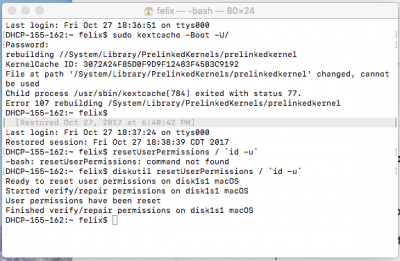I never realized how many kexts were already in System/Library/Extensions by default. Is FakeSMC.Kext, or are any of the following: IntelGraphicsFixup.kext, Lilu.Kext, RealtekRTL8111.kext, SATA-100-Series-Unsupported.Kext, USBInjectAll.kext, VoodooPS2Controller.kext already in System/Library/Extensions by default, and using KextWizard just overwrote the copy already there, or are each of these Hackintosh kexts (including FakeSMC.kext) that weren't there naturally and that I actually put there for the first time (on my own system, that is) by using KextWizard?

